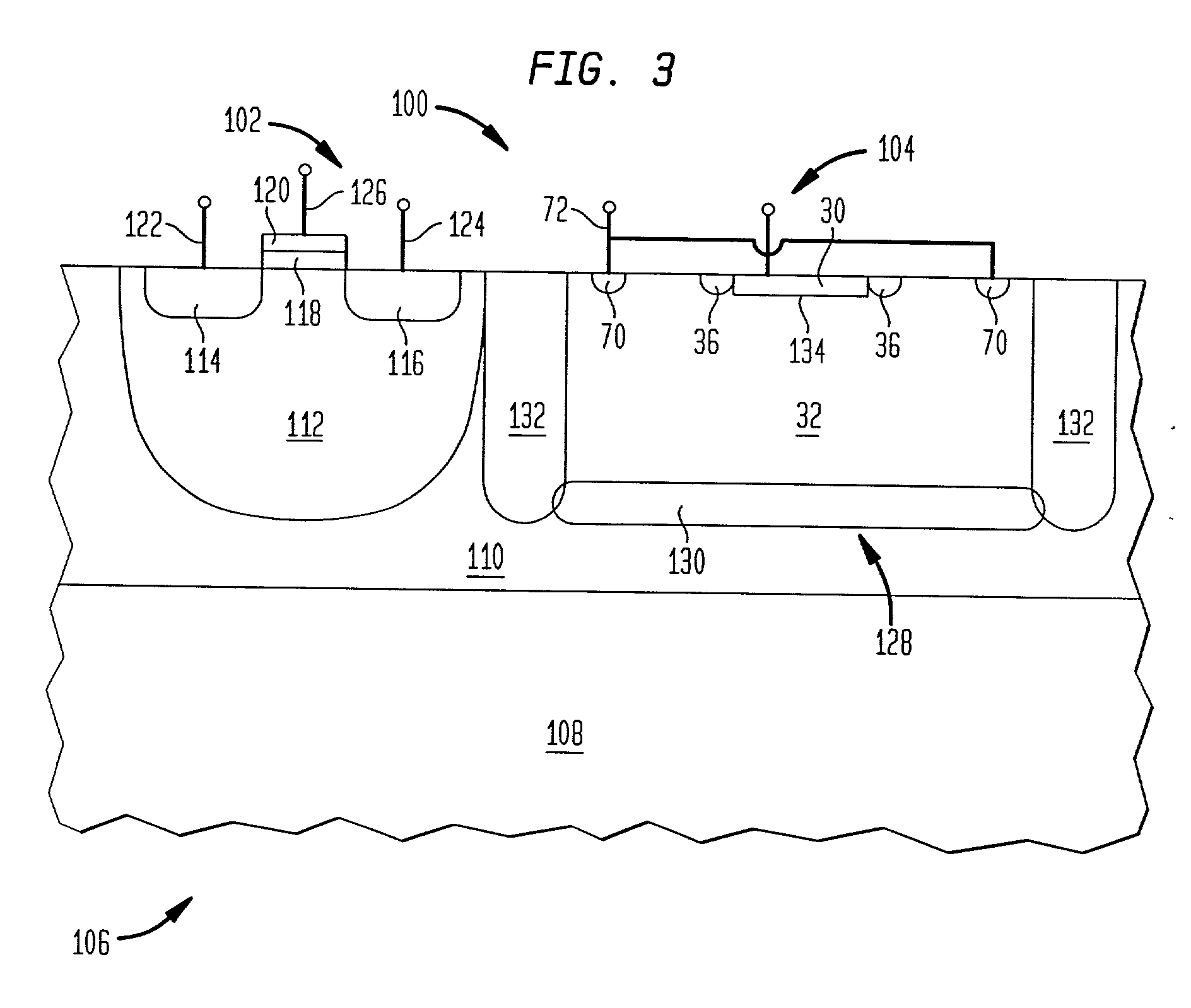Integrated optoelectronic device with an avalanche photodetector and method of making the same using commercial CMOS processes
a technology of optoelectronic devices and photodetectors, which is applied in the field of optoelectronic devices, can solve the problems of communication system performance, difficult development of integrated solid-state photodetectors, and rendering silicon-based photodetectors made in cmos process impractical for application in high-speed data communication systems
- Summary
- Abstract
- Description
- Claims
- Application Information
AI Technical Summary
Benefits of technology
Problems solved by technology
Method used
Image
Examples
Embodiment Construction
[0027] Referring now to the drawings, FIG. 1 illustrates a cross sectional view of an embodiment of an integrated optoelectronic circuit chip 10 of the present invention, and which is manufactured using complementary metal-oxide-silicon (CMOS) processes or other CMOS compatible processes such, for example, as BiCMOS or bipolar processes on a silicon substrate 12. The chip 10 includes at least one metal-oxide semiconductor field effect transistor (MOSFET) 14 and an avalanche photodetector (APD) 16.
[0028] As depicted, the MOSFET 14 includes a source region 18 and a drain region 20 diffused or implanted into a region of the substrate 12 that is doped to a conductivity type opposite that of the source and drain regions 18, 20. The MOSFET 14 further includes an oxide layer 22 extending between or spanning the source and drain regions 18, 20, and a metal gate 24 disposed on the oxide layer 22. Electrodes 26 are provided on the source and drain regions 18, 20 and the metal gate 24 for conn...
PUM
 Login to View More
Login to View More Abstract
Description
Claims
Application Information
 Login to View More
Login to View More - R&D
- Intellectual Property
- Life Sciences
- Materials
- Tech Scout
- Unparalleled Data Quality
- Higher Quality Content
- 60% Fewer Hallucinations
Browse by: Latest US Patents, China's latest patents, Technical Efficacy Thesaurus, Application Domain, Technology Topic, Popular Technical Reports.
© 2025 PatSnap. All rights reserved.Legal|Privacy policy|Modern Slavery Act Transparency Statement|Sitemap|About US| Contact US: help@patsnap.com


